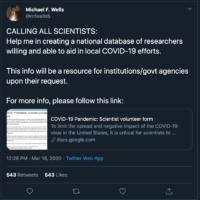Even though it’s valued at more than $15 billion, the burgeoning global cannabis industry has experienced recent layoffs. By the end of 2019, more than 600 cannabis employees got pink slips. Industry experts expect more of the same in 2020 as investigations, lawsuits and slumping valuations plague the industry.
Unfortunately for employers, layoffs are where the issues begin – not end. Especially for those without established policies and procedures. Without rules and regulations governing employment practices, business owners and operators are at considerable risk.
The 11 states where cannabis is legal for recreational use and the 33 where it’s medically legal tend to have more onerous employment practices liability (EPL) laws, where liability is often assumed by the employer for mistakes like poorly handled layoffs. This is further compounded by the fact that HR departments at fledgling cannabis companies tend to be small or non-existent and often ill prepared to deal with the legalities that come with termination.
Ensuring the right practices are in place prior to any layoffs is critical. Is your company facing employee terminations? Are you knowledgeable of how to handle it? Consider the following best practices:
- Document problematic employees. Create a folder for each employee and document the details when problematic situations escalate to the point they need to be addressed. Should employees of a protected class engage in an EEOC, class action or personal lawsuit after they’re terminated, you’ll need this documentation to support your actions.
- Create a formal termination procedure. Make sure the procedure includes well-thought-out details of your review process, including how employee performance is evaluated and what happens when those standards aren’t met. Spell out which behaviors are grounds for dismissal. When talking to the employee about a termination, have another employee or manager in the room to avoid claims of mishandling later on, typically their direct manager, someone from HR or your in-house attorney. Determine how the distribution of final compensation such as medical insurance or PTO will be handled so you’re prepared to answer those questions. These procedures should be spelled out in an employee handbook given to all at onboarding so there are no surprises.
- Retain a qualified EPL attorney. Create a relationship with a qualified EPL attorney (not your cousin who does divorce law) to help you set policies and procedures initially and to consult with when a unique or particularly difficult situation arises.
- Get the right EPL coverage. An EPL policy will defend a business from claims of breach of employment contraction, negligent evaluation, failure to employ or promote, wrongful termination, deprivation of career opportunity and mismanagement of employee benefits plans. Your EPL coverage will be determined by your location, clientele, employee profile and what you see as your biggest risks. When discussing the policy with your broker, weigh the following considerations to EPL coverage:
- Reimbursement coverage versus pay on behalf. Should the policy pay your defense costs directly, or will you lay out the money and they’ll reimburse?
- The definition of a claim and wrongful act will be different for each EPL policy.
- EPL policy’s limit structure. Do you want defense limits to be outside or inside the coverage?
Having to lay off employees is never an easy choice for an employer. Make sure you and your business do everything right before and during the process so that the aftermath isn’t even more difficult, filled with lawsuits and liability claims.

































